meniscus exercises pdf
Rehabilitation following meniscal injury is crucial; readily available meniscus exercise PDF resources aid recovery․ Protocols vary, emphasizing tailored programs for optimal functional outcomes․
Post-operative physical therapy, guided by meniscus exercise PDF guides, focuses on restoring knee function and preventing re-injury through progressive exercises․
Understanding rehabilitation protocols, often detailed in meniscus exercise PDF documents, is key to successful recovery and a return to desired activity levels․
What is a Meniscus and Why Exercise is Important
The meniscus, a C-shaped cartilage in the knee, cushions and stabilizes the joint․ Tears, common especially in the medial meniscus, disrupt this function, causing pain and instability․ Meniscus exercise PDF resources highlight the importance of targeted rehabilitation․
Exercise is vital for restoring strength, range of motion, and proprioception – the body’s awareness of its position in space; A well-structured program, often outlined in a meniscus exercise PDF, minimizes stiffness and prevents muscle atrophy․
Progressive exercises, detailed in meniscus exercise PDF guides, rebuild support structures, reducing stress on the healing meniscus․ Ignoring exercise can lead to chronic pain and increased risk of re-injury, hindering a full return to activity․
Understanding Meniscus Tears: Types and Severity
Meniscal tears vary significantly, influencing rehabilitation approaches detailed in meniscus exercise PDF guides․ Tears can be radial, horizontal, or complex, impacting stability and healing potential․ Severity ranges from minor fraying to complete disruption․
Stable tears, often smaller, may respond well to conservative management, with exercises outlined in a meniscus exercise PDF․ Unstable tears, causing locking or giving way, frequently require surgical intervention followed by a structured rehabilitation program․
A meniscus exercise PDF should be tailored to the tear’s location and severity․ Understanding these factors is crucial for selecting appropriate exercises, progressing safely, and optimizing recovery outcomes, minimizing long-term complications․

Phase 1: Acute Phase Exercises (0-6 Weeks)
Initial recovery, guided by a meniscus exercise PDF, focuses on pain and swelling reduction․ Gentle movements and isometric exercises are prioritized during this early phase․
Goal: Reduce Pain and Swelling
The primary objective during the acute phase, often detailed in a meniscus exercise PDF, is to minimize pain and inflammation․ This is achieved through controlled movements and avoiding activities that exacerbate symptoms․ Early interventions focus on reducing effusion and restoring a limited range of motion without stressing the injured meniscus․
A meniscus exercise PDF will typically outline strategies like RICE (Rest, Ice, Compression, Elevation) alongside gentle exercises․ These exercises aim to prevent muscle atrophy and maintain some level of joint mobility․ It’s crucial to adhere to pain-free ranges and avoid any movements that provoke sharp or increasing discomfort, as indicated within the meniscus exercise PDF guidelines․
Progress is gradual, and consistent monitoring of pain levels is essential throughout this initial phase of rehabilitation, as emphasized in comprehensive meniscus exercise PDF resources․
Gentle Range of Motion Exercises
A meniscus exercise PDF will commonly feature initial exercises designed to restore pain-free movement․ These focus on regaining flexibility without placing undue stress on the healing meniscus․ Ankle pumps, detailed in many meniscus exercise PDF guides, promote circulation and reduce swelling by gently moving the foot up and down․
Heel slides, also outlined in a typical meniscus exercise PDF, involve slowly sliding the heel towards the buttocks, bending the knee as far as comfortable․ These movements help to prevent stiffness and maintain some degree of joint mobility․ It’s vital to perform these exercises slowly and within a pain-free range, as highlighted in meniscus exercise PDF instructions․
These gentle motions are foundational, preparing the knee for more advanced exercises as detailed in progressive meniscus exercise PDF programs․
Ankle Pumps
As illustrated in many meniscus exercise PDF resources, ankle pumps are a foundational exercise for early rehabilitation․ They are performed by gently pointing the toes up towards the shin, then down away from the shin, repeating this motion rhythmically․ A comprehensive meniscus exercise PDF will emphasize performing these while lying down or sitting with the leg extended․
This simple exercise, frequently detailed in meniscus exercise PDF guides, promotes blood flow to the lower leg and foot, helping to reduce swelling and prevent blood clots․ The meniscus exercise PDF will likely recommend 10-20 repetitions, several times a day․
Ankle pumps are generally pain-free and serve as a gentle introduction to regaining movement, as often described within a meniscus exercise PDF’s initial phase․
Heel Slides
Heel slides, a common exercise detailed in meniscus exercise PDF guides, are performed by lying on your back with your leg extended․ Slowly slide the heel towards your buttocks, bending the knee as far as comfortable, then slowly straighten the leg again․ Many meniscus exercise PDF resources highlight the importance of controlled movement․
This exercise, frequently illustrated in meniscus exercise PDF materials, gently increases knee flexion range of motion․ A good meniscus exercise PDF will advise performing 10-15 repetitions, several times daily, focusing on a pain-free range․
Heel slides are a foundational movement, often included in the acute phase of rehabilitation as outlined in a meniscus exercise PDF, helping to prevent stiffness and promote healing․
Isometric Exercises
Isometric exercises, frequently detailed in meniscus exercise PDF rehabilitation programs, involve muscle contraction without joint movement․ These are crucial in the early stages, as many meniscus exercise PDF guides emphasize․ They help maintain muscle strength without stressing the injured meniscus․
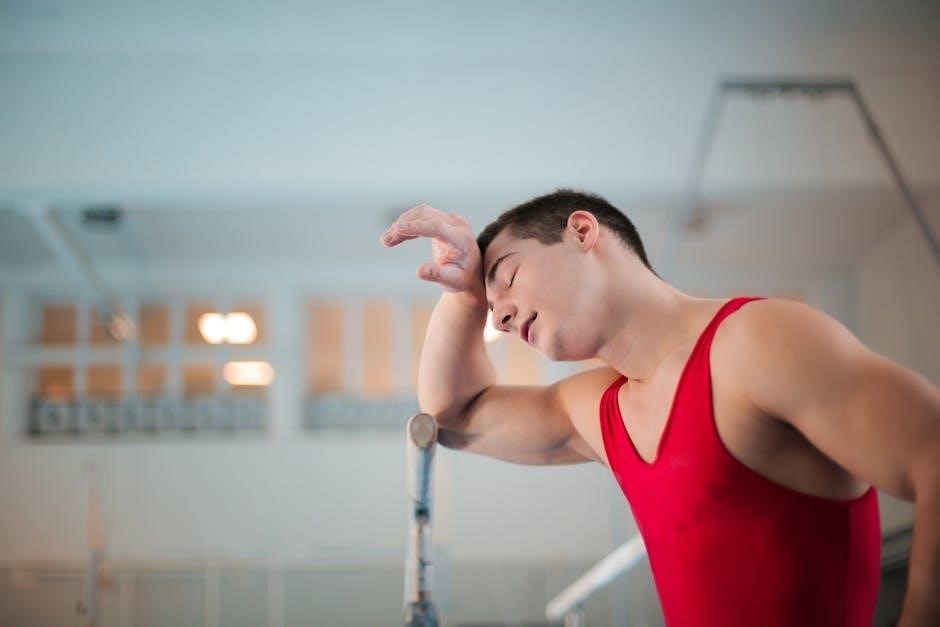
A typical meniscus exercise PDF will demonstrate quadriceps and hamstring sets․ For quadriceps sets, tighten the thigh muscles while keeping the leg straight, holding for 5-10 seconds․ A comprehensive meniscus exercise PDF will include repetitions and sets․
Hamstring sets involve pressing the heel into the bed, tightening the hamstring․ These exercises, often visually explained in a meniscus exercise PDF, are performed to minimize muscle atrophy and support knee stability․
Quadriceps Sets
Quadriceps sets, a foundational exercise often illustrated in meniscus exercise PDF resources, focus on strengthening the thigh muscles without bending or straightening the knee․ These are vital for early rehabilitation, as highlighted in many meniscus exercise PDF guides․
To perform, lie on your back with your leg straight․ Tighten your quadriceps muscle – the muscle on the front of your thigh – and push the back of your knee down into the floor․ A detailed meniscus exercise PDF will show proper form․

Hold this contraction for 5-10 seconds, then relax․ Repeat 10-15 times, several times a day․ Meniscus exercise PDF materials often recommend starting with shorter holds and gradually increasing duration․
Hamstring Sets
Hamstring sets, frequently detailed in meniscus exercise PDF guides, are isometric exercises designed to strengthen the muscles at the back of your thigh․ These are crucial for knee stability, as emphasized in post-injury rehabilitation protocols found within meniscus exercise PDF resources․
Lie on your stomach with your leg straight․ Gently try to bend your knee, but resist the movement with your hamstring muscles, pressing your heel down into the floor․ Many meniscus exercise PDF documents visually demonstrate this technique․
Hold this contraction for 5-10 seconds, then relax․ Repeat 10-15 times, several times daily; Meniscus exercise PDF materials often suggest starting slowly and increasing repetitions as strength improves․
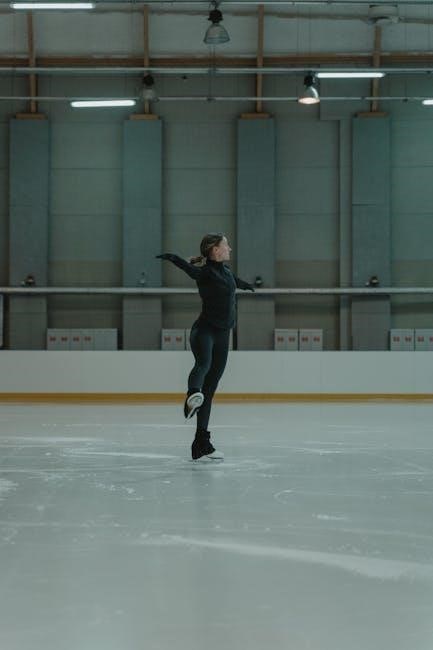
Phase 2: Intermediate Phase Exercises (6-12 Weeks)
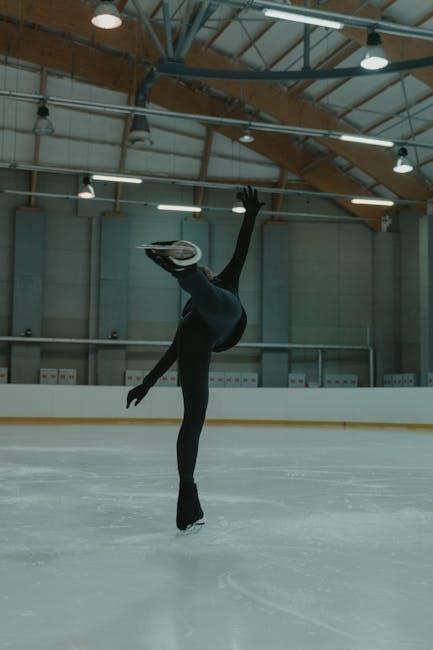
This phase, detailed in meniscus exercise PDF guides, focuses on restoring motion and strength․ Low-impact cardio and progressive strengthening are key components․
Meniscus exercise PDF resources emphasize gradual increases in intensity, building upon the foundation established during the acute phase of recovery․
Goal: Restore Range of Motion and Begin Strengthening
The primary objective during this intermediate phase, as outlined in comprehensive meniscus exercise PDF resources, is to progressively regain full knee range of motion․ This is achieved through consistent, controlled movements, avoiding any activities that provoke pain or swelling․ Simultaneously, initiating a gentle strengthening program is vital․
Meniscus exercise PDF guides typically recommend low-impact cardiovascular exercises like stationary cycling and walking to improve endurance and promote healing․ Strengthening exercises, also detailed within these PDFs, should focus on the quadriceps, hamstrings, and calf muscles, utilizing light resistance to avoid overstressing the recovering meniscus․ Proper form and technique, emphasized in these resources, are paramount to prevent re-injury and ensure effective rehabilitation․
Low-Impact Cardiovascular Exercise
Incorporating low-impact cardiovascular exercise is a cornerstone of meniscus rehabilitation, as detailed in many meniscus exercise PDF guides․ These activities enhance blood flow to the knee, promoting healing and reducing stiffness without placing excessive stress on the joint․ Stationary cycling is frequently recommended, allowing for controlled movement and adjustable resistance levels․
Meniscus exercise PDF resources also highlight the benefits of walking as a safe and effective cardiovascular option․ Begin with short, level walks, gradually increasing duration and intensity as tolerated․ Maintaining proper form and avoiding inclines initially are crucial․ These exercises, when performed correctly as outlined in the PDFs, contribute significantly to overall fitness and recovery progress․
Stationary Cycling
Meniscus exercise PDF materials consistently recommend stationary cycling as an excellent low-impact cardiovascular activity․ It allows controlled range of motion, strengthening muscles around the knee without significant joint loading․ Begin with minimal resistance and short durations, gradually increasing both as pain allows, as detailed in the PDFs․
Focus on maintaining a smooth, circular pedal motion, avoiding jerky movements․ Adjust seat height to ensure a slight bend in the knee at the bottom of the pedal stroke․ Meniscus exercise PDF guides often suggest starting with 10-15 minute sessions, progressing to 20-30 minutes as tolerated․ This exercise improves endurance and supports healing․
Walking
Meniscus exercise PDF resources frequently highlight walking as a foundational low-impact exercise․ It’s easily accessible and promotes gradual strengthening of the knee joint and surrounding musculature․ Begin with short, level walks, focusing on proper gait mechanics – a heel-to-toe rolling motion․ As outlined in many meniscus exercise PDF guides, start with 5-10 minute walks․
Gradually increase duration and distance as pain permits, aiming for 20-30 minute walks․ Avoid uneven terrain initially․ Pay attention to any pain signals and modify activity accordingly․ Proper footwear is crucial for shock absorption․ Meniscus exercise PDF materials emphasize consistency and listening to your body during this phase․
Strengthening Exercises
Meniscus exercise PDF programs progressively introduce strengthening exercises to rebuild muscle support around the knee․ These exercises are vital for stability and function․ Initial focus is on quadriceps and hamstrings, often with light resistance․ Many meniscus exercise PDF guides detail specific protocols for each phase of recovery․
Exercises like short arc quads and hamstring curls, as frequently illustrated in meniscus exercise PDF materials, are excellent starting points․ Calf raises also contribute to overall leg strength․ Proper form is paramount to prevent re-injury․ Gradually increase resistance as strength improves, always prioritizing controlled movements and pain-free execution․
Short Arc Quads
Meniscus exercise PDF resources consistently highlight short arc quads as a foundational strengthening exercise․ This involves tightening the thigh muscles while extending the knee from a bent position, typically 45-90 degrees․ A rolled towel placed under the knee supports this range of motion, as often demonstrated in meniscus exercise PDF illustrations․
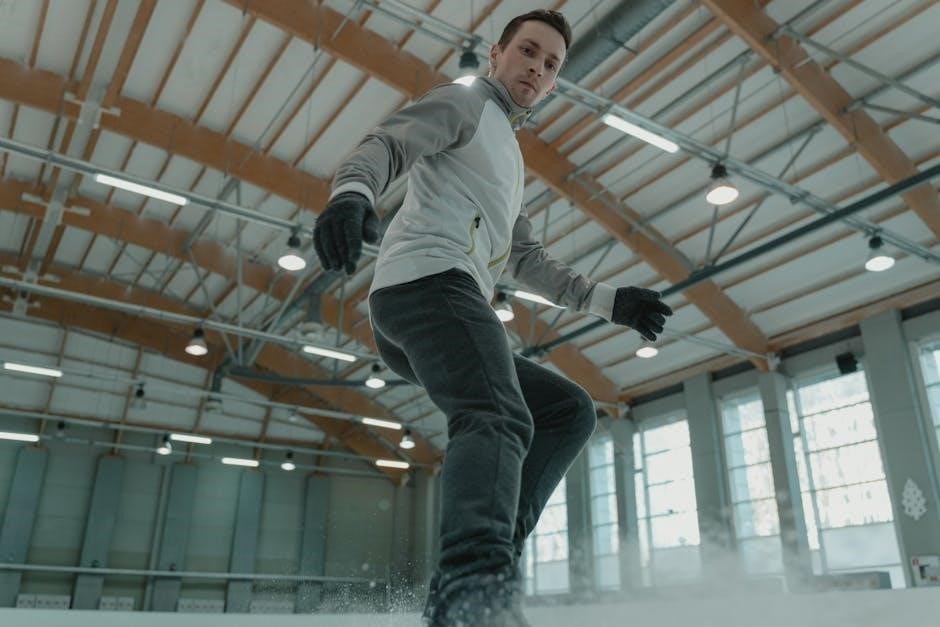
The focus is on isolating the quadriceps, avoiding full extension to minimize stress on the meniscus․ Hold the contraction for 5-10 seconds, then slowly release․ Meniscus exercise PDF guides recommend 10-15 repetitions, several times a day․ This exercise improves quadriceps strength, crucial for knee stability and function during recovery․
Hamstring Curls (Light Resistance)
Meniscus exercise PDF materials frequently include hamstring curls as a key component of intermediate rehabilitation․ These are performed using resistance bands or light weight machines, focusing on controlled movement․ The goal, as detailed in many meniscus exercise PDF guides, is to strengthen the hamstrings without exacerbating knee pain or stress on the meniscus․
Begin with minimal resistance, gradually increasing it as strength improves․ Maintain a slow, controlled pace throughout the exercise․ Meniscus exercise PDF resources typically suggest 10-15 repetitions per set, with 2-3 sets performed․ Proper form is essential to avoid compensatory movements and maximize hamstring engagement․
Calf Raises
Meniscus exercise PDF programs often incorporate calf raises to strengthen the calf muscles, supporting knee stability․ These can be performed with body weight alone, or with added resistance using dumbbells or a calf raise machine․ Many meniscus exercise PDF guides emphasize controlled movements, focusing on a full range of motion․
Start by standing with feet flat on the floor, then slowly rise up onto your toes, squeezing the calf muscles․ Lower back down with control․ Meniscus exercise PDF resources typically recommend 15-20 repetitions per set, completing 2-3 sets․ Maintaining balance is crucial; use support if needed initially․
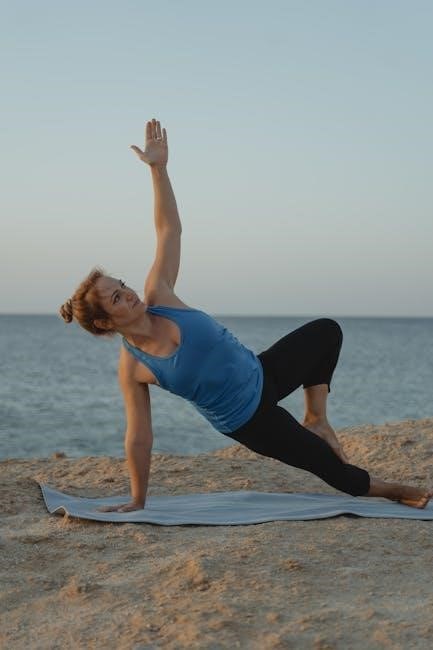
Phase 3: Advanced Phase Exercises (12+ Weeks)
This phase, detailed in meniscus exercise PDF guides, focuses on regaining full function․ Proprioceptive and functional exercises prepare the knee for return to activity․
Goal: Return to Activity and Prevent Re-Injury
The ultimate aim of Phase 3, as outlined in comprehensive meniscus exercise PDF resources, is a safe and confident return to pre-injury activity levels․ This necessitates a progressive approach, building upon the strength and stability gained in earlier phases․
Meniscus exercise PDF protocols emphasize functional movements that mimic real-life scenarios, such as running, jumping, and pivoting․ Proprioceptive training, crucial for joint awareness, is also heavily featured, utilizing balance boards and single-leg exercises․
Preventing re-injury is paramount․ Meniscus exercise PDF guides often include plyometric exercises – cautiously introduced – to enhance power and agility․ Consistent adherence to the program, coupled with proper form, minimizes the risk of setbacks and ensures long-term knee health․
Proprioceptive Exercises
Proprioception, the body’s awareness of its position in space, is vital for knee stability post-meniscus injury․ Meniscus exercise PDF materials consistently highlight exercises designed to restore this crucial sense, reducing re-injury risk․
Single-leg stance exercises, detailed in meniscus exercise PDF guides, challenge balance and strengthen supporting muscles․ Progressing to unstable surfaces, like foam pads or wobble boards, further enhances proprioceptive input․
Balance board exercises, frequently illustrated in meniscus exercise PDF resources, improve dynamic stability and neuromuscular control․ These drills train the knee to react quickly and efficiently to unexpected movements, crucial for functional activities and athletic performance․
Single Leg Stance
The single leg stance is a foundational proprioceptive exercise, frequently detailed within meniscus exercise PDF rehabilitation programs․ It challenges balance and activates key stabilizing muscles around the knee and hip, improving neuromuscular control․
Begin by simply standing on the injured leg for 30 seconds, gradually increasing duration as strength and balance improve․ Meniscus exercise PDF guides often suggest performing this near a stable surface for safety․
Progressions, outlined in meniscus exercise PDF resources, include closing the eyes, performing on an uneven surface, or adding arm movements to further challenge stability․ Proper form is paramount to avoid compensatory movements and maximize effectiveness․
Balance Board Exercises
Balance board exercises, commonly illustrated in meniscus exercise PDF rehabilitation protocols, significantly enhance proprioception and dynamic stability․ These exercises challenge the body’s ability to maintain equilibrium on an unstable surface, strengthening supporting muscles․
Start with gentle rocking motions in all directions, maintaining a slight bend in the knee․ Meniscus exercise PDF resources emphasize controlled movements and avoiding sudden shifts in weight․
Progressions, detailed in meniscus exercise PDF guides, involve increasing the range of motion, attempting single-leg stance on the board, or incorporating reaching movements․ Prioritize safety and proper form to prevent re-injury․
Functional Exercises
Functional exercises, often detailed within meniscus exercise PDF rehabilitation programs, bridge the gap between controlled exercises and real-life activities․ These movements mimic daily tasks, preparing the knee for the demands of work, sports, or recreation․
Step-ups, a common component of meniscus exercise PDF routines, improve lower body strength and functional stability․ Focus on controlled ascent and descent, maintaining proper alignment․
Lunges, also frequently included in meniscus exercise PDF guides, enhance strength, balance, and coordination․ Ensure the front knee tracks over the ankle and avoid excessive knee valgus․ Progress gradually, prioritizing form over depth․
Step-Ups
Step-ups, frequently illustrated in meniscus exercise PDF rehabilitation guides, are excellent for building lower body strength and improving functional movement patterns․ Begin with a low step height and gradually increase it as strength improves․
Focus on controlled execution, driving through the heel of the stepping foot․ Avoid using momentum and maintain proper knee alignment – tracking over the toes․ Meniscus exercise PDF resources often emphasize this point․
Ensure the non-stepping leg doesn’t collapse inward․ Core engagement is crucial for stability․ As detailed in many meniscus exercise PDF programs, progress to higher steps or add light weights for increased challenge․
Lunges
Lunges, a cornerstone of many meniscus exercise PDF rehabilitation programs, effectively strengthen the quadriceps, hamstrings, and glutes – vital for knee stability․ Start with static lunges, ensuring the front knee doesn’t extend past the toes․
Progress to dynamic lunges, maintaining a controlled descent and ascent․ Proper form, often visually demonstrated in meniscus exercise PDF guides, is paramount to avoid stressing the meniscus․ Keep your core engaged throughout the movement․
Variations like reverse lunges or lateral lunges can be incorporated as strength increases, as suggested by advanced meniscus exercise PDF protocols․ Focus on a smooth, pain-free range of motion․
Plyometric Exercises (Caution Advised)
Plyometrics, detailed cautiously within advanced meniscus exercise PDF resources, aim to improve power and agility, but require significant knee stability․ Begin only after achieving substantial strength and range of motion․
Low-height box jumps are an initial option, emphasizing soft landings to minimize impact․ Meniscus exercise PDF guides stress the importance of controlled movements and avoiding any pain․
Short-duration jump rope can also be introduced, focusing on proper technique․ Always consult a physical therapist before starting plyometrics, as outlined in comprehensive meniscus exercise PDF rehabilitation plans․ Progress gradually and listen to your body․
Box Jumps (Low Height)
Box jumps, as detailed in advanced meniscus exercise PDF guides, are introduced cautiously to enhance power, but require excellent knee control․ Start with a very low box – 4-6 inches is ideal – and prioritize proper form․
Focus on a soft landing, absorbing the impact through your hips, knees, and ankles․ Meniscus exercise PDF resources emphasize bending the knees upon landing to minimize stress on the meniscus․
Avoid locking your knees or landing stiffly․ Begin with a low volume – 5-8 repetitions – and gradually increase as tolerated․ Consult your physical therapist and refer to your meniscus exercise PDF for personalized guidance․
Jump Rope (Short Duration)
Jump rope, often included in advanced meniscus exercise PDF programs, improves cardiovascular fitness and agility, but demands careful execution․ Begin with very short intervals – 30-60 seconds – interspersed with longer rest periods․
Maintain a slight bend in your knees throughout the exercise to absorb impact, a key principle highlighted in meniscus exercise PDF materials․ Avoid excessive jumping height, focusing on quick, controlled movements․
Listen to your body and stop immediately if you experience any pain․ Your meniscus exercise PDF should provide modifications if needed․ Progress gradually, increasing duration and intensity only as tolerated, under professional guidance․

Important Considerations & Precautions
Always prioritize listening to your body; meniscus exercise PDF guides emphasize pain management․ Proper form is vital, and consulting a physical therapist is highly recommended․
Listening to Your Body: Pain Management
Pain is a crucial signal during meniscus rehabilitation, and meniscus exercise PDF resources often highlight this․ Mild discomfort is expected, but sharp, increasing, or persistent pain necessitates immediate cessation of the exercise․ Do not “push through” significant pain, as this can exacerbate the injury and hinder recovery․
Utilize the RICE protocol – Rest, Ice, Compression, and Elevation – to manage any post-exercise soreness․ Refer to your meniscus exercise PDF for guidance on appropriate icing duration and compression techniques․ Gradually increase exercise intensity, paying close attention to your body’s response․
If pain persists despite rest and conservative measures, consult with your physical therapist or physician․ They can assess your condition and modify your exercise program accordingly, ensuring safe and effective rehabilitation․ Remember, a pain-free range of motion is the ultimate goal․
Proper Form and Technique
Maintaining correct form during meniscus exercises is paramount to prevent re-injury and maximize effectiveness․ Many meniscus exercise PDF guides emphasize visual demonstrations and detailed instructions․ Incorrect technique can place undue stress on the healing meniscus and surrounding structures․
Focus on controlled movements, avoiding jerky or rushed motions․ Engage your core muscles throughout each exercise to provide stability and support․ Refer to the illustrations within your meniscus exercise PDF to ensure proper alignment and muscle activation․

If you are unsure about proper form, seek guidance from a physical therapist․ They can provide personalized feedback and corrections․ Prioritize quality over quantity; performing fewer repetitions with correct form is far more beneficial than numerous repetitions with poor technique․
Working with a Physical Therapist
A physical therapist is invaluable in guiding your meniscus rehabilitation․ They’ll create a personalized exercise plan, often supplementing a general meniscus exercise PDF with tailored modifications․ Initial assessments determine your specific needs and limitations, ensuring a safe and effective progression․
They’ll monitor your progress, adjusting exercises as you regain strength and range of motion․ A therapist can address any pain or discomfort, preventing setbacks․ They’ll also teach you proper form, crucial for avoiding re-injury, often referencing techniques detailed in a meniscus exercise PDF․
Don’t hesitate to ask questions and communicate any concerns․ A collaborative approach with your therapist maximizes your chances of a full and successful recovery, going beyond simply following a meniscus exercise PDF․
Meniscus Exercise PDF Resources
Numerous meniscus exercise PDF resources are available online, offering guidance for rehabilitation․ However, quality varies significantly; prioritize sources from reputable medical institutions or physical therapy associations; These PDFs often detail exercises categorized by recovery phase, mirroring a structured program․
Look for resources that include clear illustrations or videos demonstrating proper form․ Many PDFs outline progressions, starting with gentle range-of-motion exercises and advancing to strengthening and proprioceptive drills․ Remember, a meniscus exercise PDF is a supplement, not a replacement, for professional guidance․
Always discuss any PDF-based exercise program with your physical therapist to ensure it aligns with your specific needs and recovery stage․ Caution is advised; self-treating solely based on a meniscus exercise PDF can be detrimental․
